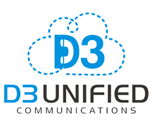This week, we present Chapter 1: How Good We Had It: The Money-Making Machine Known as High-Tech. This is the second post in a series dedicated to helping MSPs understand and adopt the recommendations of Consumption Economics–The New Rules of Tech. Chuck introduces the chapter by sharing how the content resonates with his 30+ years of industry insight.
A FEW WORDS FROM CHUCK
For almost my entire career, the technology vendor business model was stable, predictable, low risk, CapEx driven, and highly profitable. The products offered to businesses featured complex hardware, software, networks, and services. Buyers disregarded the significant investment risk and willingly invested their capital. Prior to 2008, buyers viewed capital expenditures as an opportunity for value creation—increased revenues, reduced costs, improved competitive advantage, enhanced customer service and increased employee productivity. The cost-benefit analysis from the buyer’s perspective supported bearing far more of the financial risk than the technology vendor.
Technology vendors had a good gig going. They locked in significant profitable revenue before the customer even started using the technology vendor’s products and services. The product revenue, the professional services revenue, and the first year maintenance were all in the bank whether or not the customer realized the promised return on investment. Over the course of 30 years, this business model created trillions of dollars of wealth for technology vendors. Life was good.
Here is where I must evoke the old adage, “All good things must come to an end.” Over time, customers began to resent the ongoing cost of managing the technological complexity handed to them by their technology vendors (think about your own technology buying behavior!) Complexity began to exhaust company IT budget dollars. The reality of cheaper, faster, and more efficient (and less need for complex technology) started to resonate with companies. They lost interest in the high priced, high risk, high complexity offers that had been so profitable for technology vendors in the past. The old way of doing business was forever changed in 2008.
AN EXCERPT FROM Consumption Economics—The New Rules of Tech
 Chapter 1. How Good We Had It: The Money-Making Machine Known as High-Tech
Chapter 1. How Good We Had It: The Money-Making Machine Known as High-Tech
In sector after sector, the profitability of selling tech products is shrinking. Price competition is taking a huge toll on product margins not just in consumer sectors like PCs, but also in traditionally profitable enterprise segments like networking and software. It’s not because tech companies can’t innovate anymore, but because tech customers can barely use the complex technology they already own. They have unused features and licenses, excess capacity, and stable systems that serve their basic needs, so why buy more unless it’s cheaper? This is not the path to profitable growth. It is the path to commoditization and it is forcing companies to change what business they’re in just to maintain margins. Hardware companies are jumping to services and software. Software companies are making their profits off of maintenance contracts, not selling software.
In the new economics of the cloud, driving usage is even more critical since nearly all the revenue will be based on consumption, and switching costs will be low for disgruntled customers. The cloud could lead to the rapid draining of the profit pool for high-tech—a relentless drive for cheaper and cheaper versions of standard functionality. And if you looked closely, if you talk to frustrated corporate CIOs, the handwriting is on the wall. There is a steady, growing pile of customer frustration—dead wood waiting for a match.
And sure enough, in 2008, the match appeared. Three things within fifteen months—not directly related but highly synergistic—occurred that will forever change the rules of the tech business.
- The global economy tanked.
- Cloud computing got hot.
- The iPhone came out.
Put these three things together—increased scrutiny on technology ownership costs and ROI, the disruptive promise of cloud-computing models, and the consumerization of IT—and you have the underpinnings of a sea change in how tech companies must operate to drive profitable growth. A brutal and uncertain economy has created a permanent demand for simpler, lower-cost, lower-risk technology solutions. A shift is beginning. In the growing worlds of cloud and managed services, the pattern of purchasing technology is changing. With this new purchasing pattern, risk is moving from the customer to the tech company.
So regardless of whether your company is facing declining margins in your traditional product markets or starting to understand the profound risk-shifting impact of the cloud, the rules of the game are changing. The ability to successfully drive consumption is about to become the critical enabler of profitable growth. How we build products, how we drive revenue, what services we offer, what we must do to succeed are all on the table. It is the rise of Consumption Economics, and it has new rules.
Because D3UC is dedicated to and entrenched with the MSP community, each week a new chapter of Consumption Economics will be discussed with emphasis focused on the challenges faced by VARs and MSPs who are transforming their companies’ business models to survive and thrive in the new, cloud-driven world.
If you would like an overview of the book Consumption Economics, you can download a copy of the “abridged” version written by the TSIA from our website.
Week 2: How Good We Had It: The Money-Making Machine Known as High-Tech
Week 3: Shifting Clouds and Changing Rules
Week 4: Looking Over the Margin Wall
Week 5: Learning to Love Micro-Transactions
Week 6: The Data Piling Up in the Corner
Week 7: Consumption Development: The Art and Science of Intelligent Listening
Week 8: Consumption Marketing: Micro-Marketing and Micro-Buzz
Week 9: Consumption Sales: After a Great Run, the Classic Model Gets an Overhaul
Week 10: Consumption Services: Will They Someday Own “The Number”?
Week 11: How Fast Should You Transform?
Week 12: A Few Words From Chuck – The Epilogue
Published: May 2015
Reviewed: November 2016, March 2017

